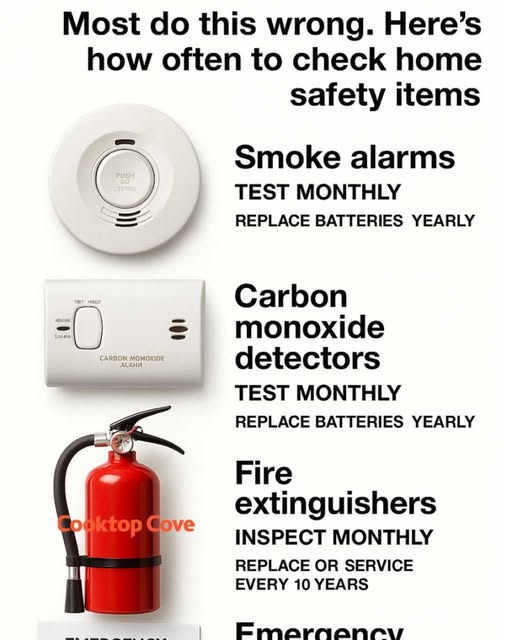Home safety is a critical aspect of maintaining a secure and healthy living environment, yet many homeowners overlook the regular checks and maintenance required to ensure everything is functioning correctly. While it might seem like a daunting task, establishing a routine for checking home safety items can prevent accidents, save money, and provide peace of mind.
In this article, we will explore the most common home safety items that are often neglected and provide a detailed guide on how frequently each should be checked. By following these guidelines, you can ensure that your home remains a safe haven for you and your family.
Advertisement
1. Smoke Alarms: Test Monthly, Replace Batteries Yearly
Smoke alarms are your first line of defense against fire hazards. It is recommended to test your smoke alarms monthly to ensure they are functioning properly. This can be done by pressing the test button on the alarm; if it beeps, it’s working. If not, it may need new batteries or replacement.
In addition to monthly testing, replace the batteries in your smoke alarms at least once a year. A good rule of thumb is to do this when you change your clocks for daylight saving time. Smoke alarms themselves should be replaced every 10 years, as their sensors can degrade over time.
2. Carbon Monoxide Detectors: Test Monthly, Replace Batteries Yearly
Carbon monoxide detectors are essential for detecting this colorless, odorless gas that can be deadly. Like smoke alarms, these should be tested monthly by pressing the test button to ensure they are operational.
Replace the batteries in your carbon monoxide detectors annually, and consider replacing the entire unit every 5 to 7 years, as recommended by the manufacturer, to ensure optimal performance.
3. Fire Extinguishers: Inspect Monthly, Replace or Service Every 10 Years
Fire extinguishers should be inspected monthly to ensure they are ready for use in an emergency. Check that the pressure gauge needle is in the green zone, the pin and tamper seal are intact, and there is no visible damage or corrosion.
Fire extinguishers typically have a lifespan of 5 to 15 years, depending on the type and manufacturer. It is recommended to replace or have them professionally serviced every 10 years to ensure they remain effective.
Next
ADVERTISEMENT

